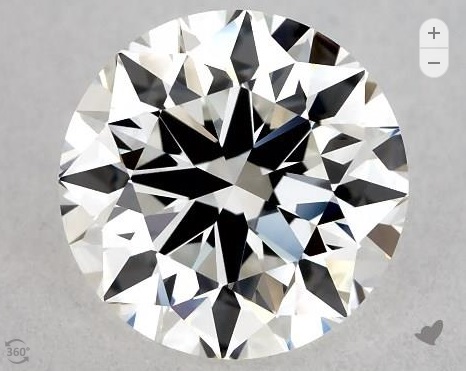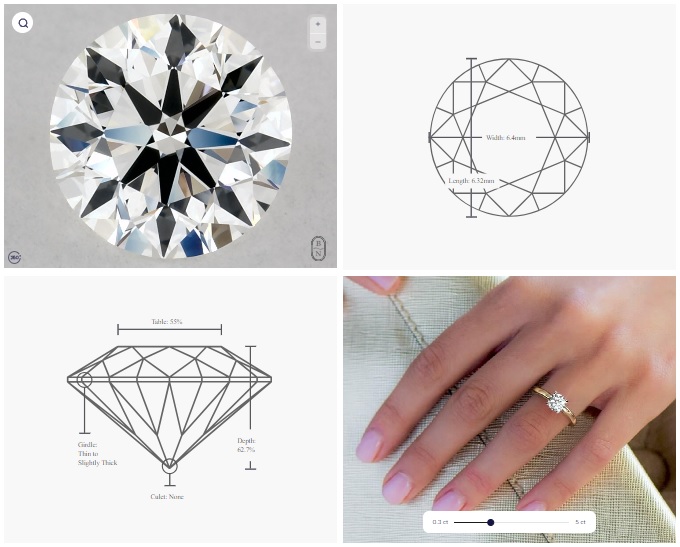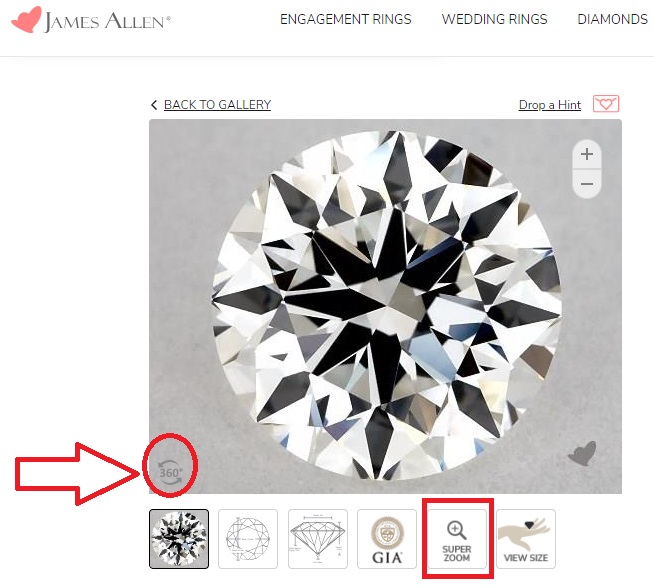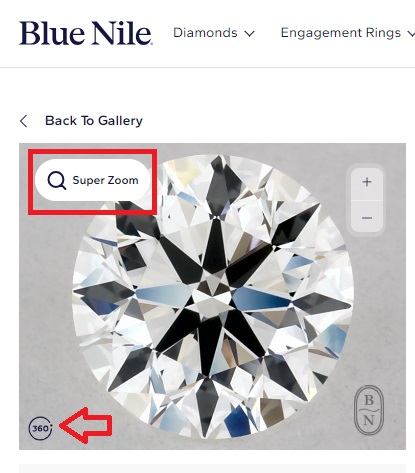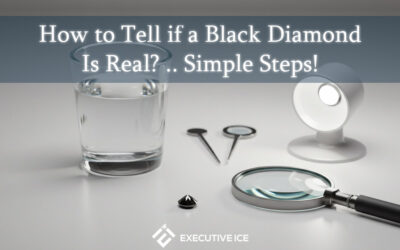When buying a diamond, you want it to look as beautiful and sparkly as possible, right? But did you know that some diamonds have tiny flaws inside them that can affect how they look?
These flaws, called “inclusions,” can make a diamond less shiny or even weaken it. Therefore, understanding the diamond clarity characteristics to avoid is key to ensuring you pick the best diamond for your money.
In this article:
We’ll help you learn about the different types of inclusions and which ones to avoid. You’ll know what to watch for, like small cracks or dark spots, so you can choose a diamond that sparkles brightly and lasts a long time.
By the end of this guide:
You’ll know exactly what diamond clarity characteristics to avoid and feel confident choosing a diamond that’s both beautiful and a great value!
Quick Look: Common Diamond Inclusions to Watch Out For
Before we dive into the details of each type of diamond inclusion, here’s a helpful image that gives you a quick overview of the most common flaws.
This snapshot 👇 will give you an idea of what to look out for as we explore the different types of inclusions in more depth.
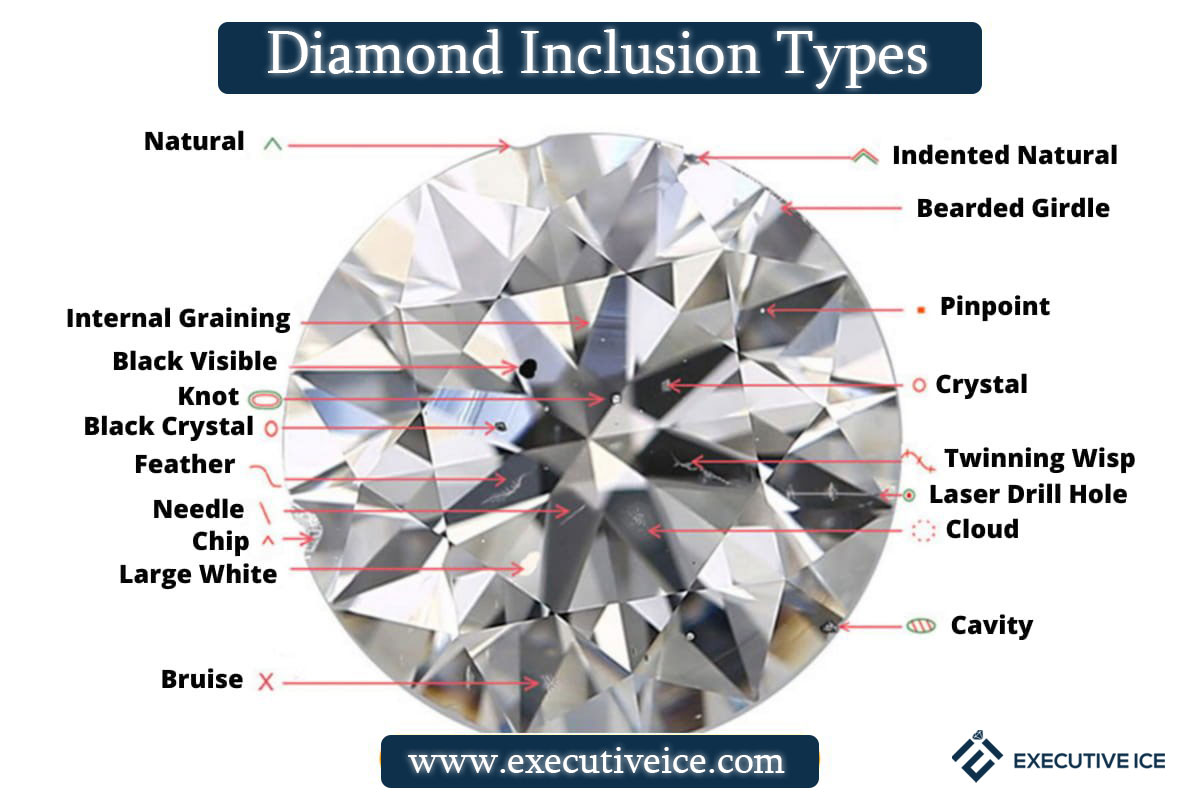
Below, you’ll find symbols representing the common shapes of inclusion:👇
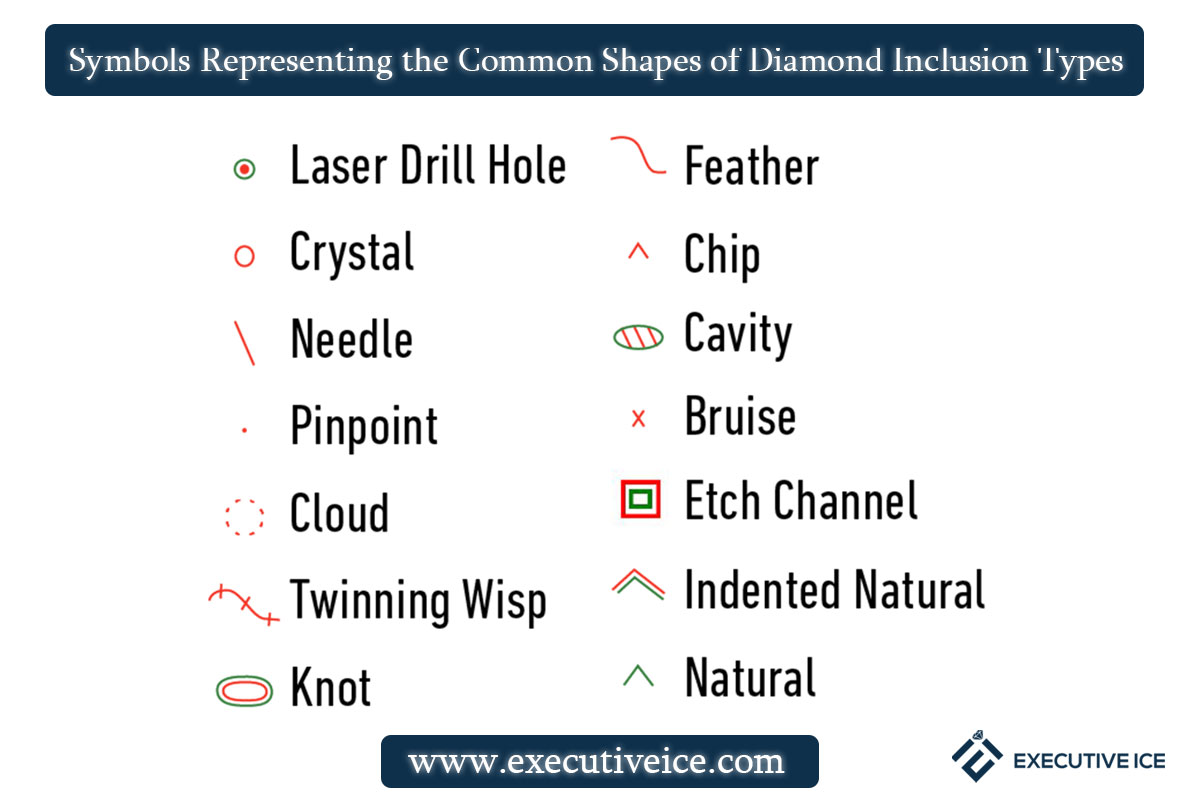
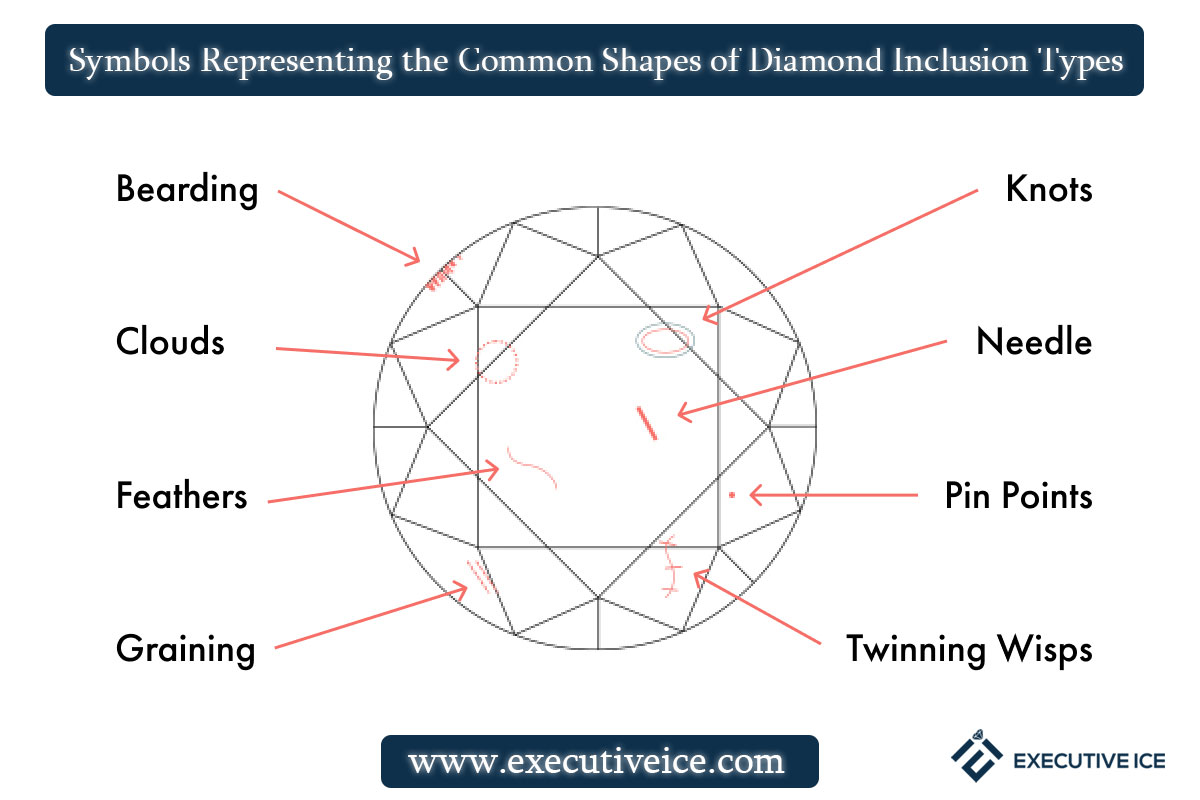
Why Understanding Diamond Clarity is Key?
When you think about diamonds, you probably imagine something that sparkles and shines, like a tiny piece of a star. But not all diamonds shine the same way.
Why?
Because some diamonds have tiny imperfections inside them called “inclusions.”
Think of these inclusions like little smudges on a window; they can stop the light from passing through smoothly, which makes the diamond less sparkly.
Diamond clarity is all about how clean or clear a diamond looks. The clearer the diamond, the better it can shine and reflect light, that’s why clarity matters, it affects both how beautiful the diamond looks and how valuable it is.
If a diamond has too many inclusions or certain types of flaws, it can lose its sparkle and even be weaker, which isn’t what you want if you’re looking for something special.
You may be interested in:
How to Buy Diamonds in 2024 Like a Pro
Understanding Diamond Clarity
Diamond clarity is all about how clear or clean a diamond is, the fewer tiny imperfections, or “inclusions,” a diamond has, the clearer it will look.
These inclusions are like little spots or cracks inside the diamond that can stop light from bouncing around, making the diamond less shiny.
Think of it like a window! the cleaner the window, the more sunlight can pass through and brighten a room.
To learn more about how diamond clarity is measured and what each clarity grade means, check out our detailed guide: “Diamond Clarity Simplified: Your Comprehensive Guide.”
This guide will help you understand the different levels of clarity and how they affect the beauty and value of a diamond.
Here’s a quick look at the 6 categories based on the cleanness of a diamond👇

Types of Diamond Inclusions to Avoid
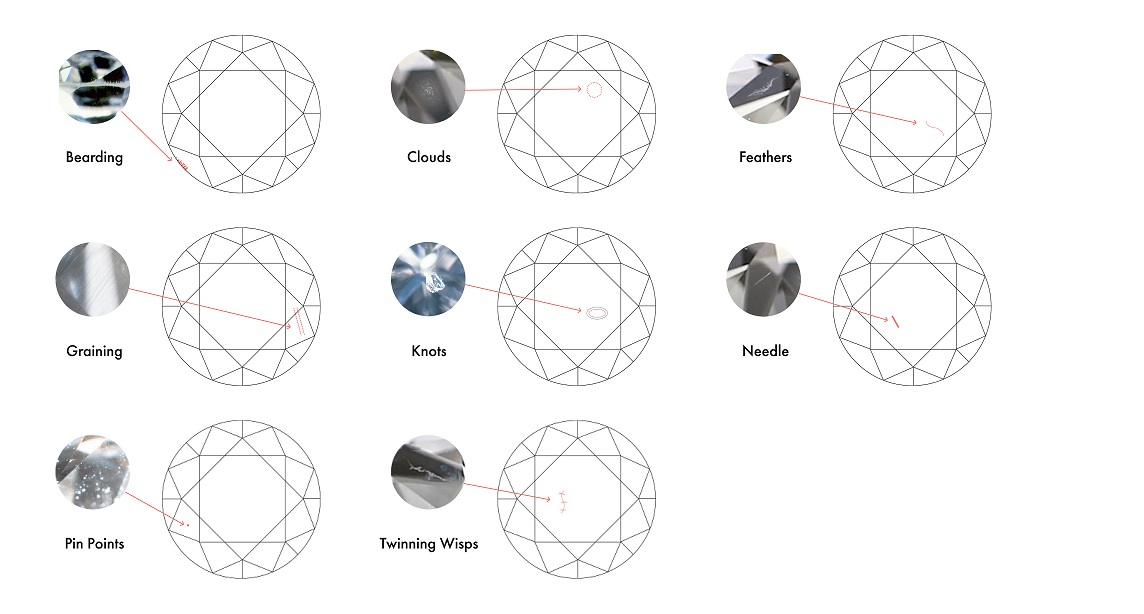
First of all:
Before we dive into the types, it’s important to remember that inclusions aren’t always bad.
In fact, most diamonds have them, and they’re often too small to even notice, the size, type, and location of an inclusion can make a big difference.
Many inclusions are perfectly acceptable and don’t affect the diamond’s beauty.
For example:
Look at this beautiful diamond from James Allen, which is graded as VVS2 for clarity. According to the GIA Certifications, it has a small ‘cloud’ inclusion. However, the cloud is very light and hard to see, so the diamond still holds its value and looks great.
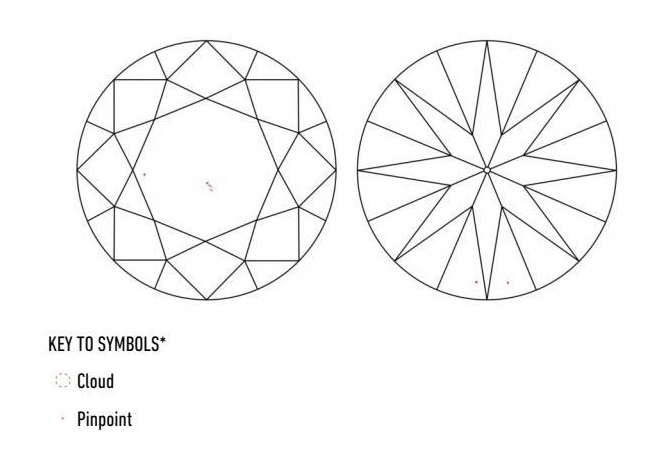
However, some inclusions are more problematic and can impact the diamond’s sparkle or durability, and those are the ones you’ll want to avoid.
Now, let’s dive into the types:
-
Feathers in Diamonds
A “feather” is basically a tiny crack or fracture inside the diamond that looks like, well, a feather! While it might not sound like a big deal, these cracks can be a problem, especially if they’re close to the surface of the diamond.
Think of it like a small crack in a windshield. It might not seem like much at first, but over time, it could grow bigger and even make the diamond more likely to chip or break. Feathers can also affect how light moves through the diamond, making it look less sparkly than it should.
If a feather is deep inside the diamond, it might not cause much harm or even be noticeable. But when the feather is closer to the surface, it’s something you should definitely avoid, especially if you want a diamond that will last a long time and keep its shine.
The following diamond 👇 is graded as VS2 in clarity. The red box highlights a feather located near the table, which is easily visible when viewed from the top under 10× magnification.
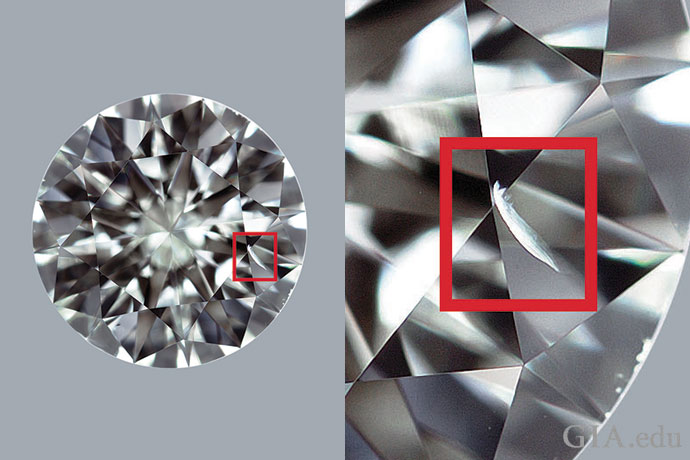
Photo: GIA
You may be interested in:
How much should I spend on an engagement ring?
-
Crystals in Diamonds
Another type of inclusion to watch out for in diamonds is called a “crystal.”
Crystals are actually tiny pieces of other minerals or even other diamonds trapped inside the diamond.
While this might sound cool, these little specks can make a diamond look less clear and affect its sparkle.
Imagine looking through a glass of water with a little pebble at the bottom, it’s going to block some light and make things look cloudy, that’s kind of what happens when a crystal is inside a diamond.
Depending on its size, color, and location, a crystal can be easy to see, especially if it’s dark or close to the surface of the diamond.
If the crystal is small or light in color, it might not be a big deal and could be hard to notice without a magnifying glass, but if the crystal is large or dark, it can be more obvious and reduce the overall quality of the diamond.
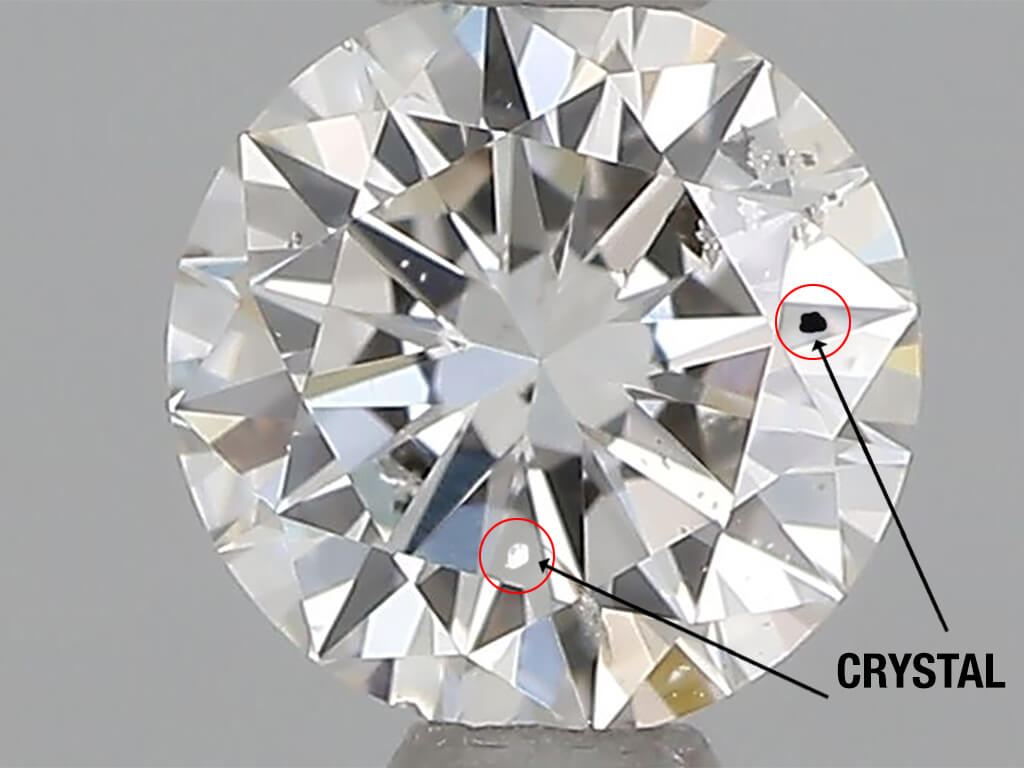
-
Clouds in Diamonds
A “cloud” is another type of diamond inclusion you should watch out for. Unlike a single flaw, a cloud is actually a group of very tiny inclusions that are so close together, they create a hazy or cloudy effect inside the diamond.
Think of it:
Like looking through a foggy window! Even though the window is clear, the fog makes it hard to see through and blocks the light from passing through as it should.
In a diamond, clouds can make the stone look dull because they stop the light from bouncing around inside, which is what makes a diamond sparkle.
Small clouds might not be a big deal if they’re hard to spot or in a less noticeable part of the diamond, but larger clouds or clouds that are close to the center of the diamond can affect its brilliance and should be avoided.
If a diamond looks cloudy, it may not have the sparkle you’re looking for, so it’s best to choose one without noticeable clouds.
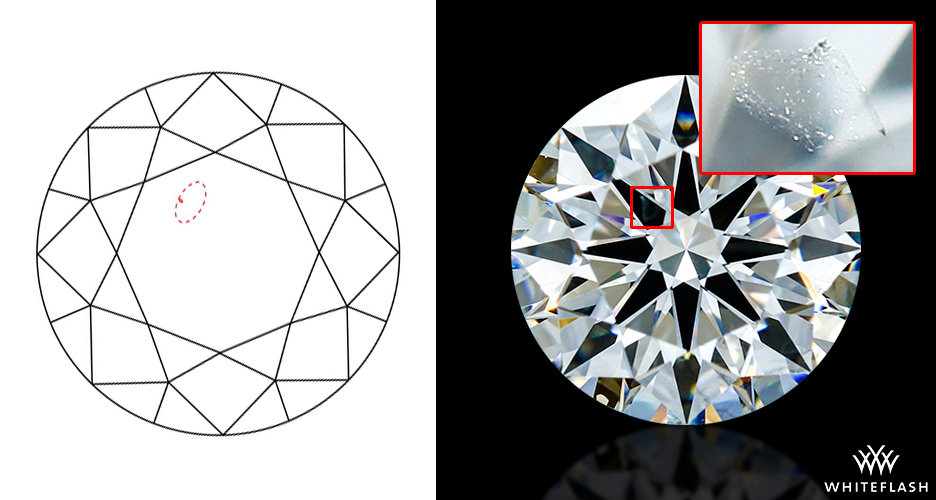
Photo: Whiteflash
-
Cavities in Diamonds
A “cavity” in a diamond is exactly what it sounds like, a small hole or open space on the surface of the diamond. Cavities happen when a tiny crystal inside the diamond falls out, leaving behind a little gap.
Think of it:
Like getting a chip on your tooth 😁 It’s a small opening, but over time, dirt or other stuff can get stuck in it, making it more noticeable.
The same goes for cavities in diamonds, dirt can gather in these tiny holes, and even though they’re small, they can affect how the diamond looks.
Cavities can also make a diamond weaker! Yes, if the cavity is near the edge, it might be more likely to chip or break. So, when choosing a diamond, it’s important to avoid ones with noticeable cavities.

-
Chips in Diamonds
A “chip” is a small, shallow break on the surface of a diamond, usually near the edges or corners.
Chips can happen when the diamond gets knocked or bumped into something hard. while they may be small, chips can affect how the diamond looks and can make it more fragile.
Imagine:
You accidentally drop your phone and it gets a tiny crack in the screen. The phone still works, but that crack is always visible, and if it gets worse, the screen could break more.
The same goes for chips in diamonds, even if they’re tiny, they can still catch the light in a weird way and make the diamond less sparkly.
Plus:
A chip could make the diamond more likely to get damaged in the future.
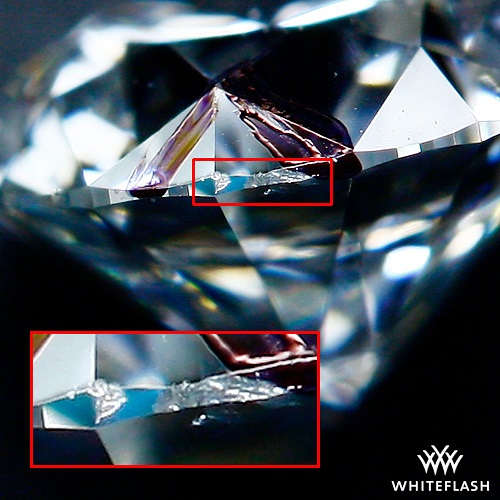
Photo: Whiteflash
-
Needles in Diamonds
A “needle” is a long, thin inclusion inside the diamond that looks like a tiny, straight line.
These needle-shaped inclusions can be made of tiny minerals or crystals trapped inside the diamond when it was formed.
While needles are usually very small, they can be noticeable if they’re close to the surface or grouped together.
Picture this:
It’s like finding a thin thread stuck inside a clear glass. Even though the thread is small, it can still be seen, and it blocks the light from passing through smoothly.
In a diamond, needles can do the same thing, they can affect how the light moves through the diamond, reducing its sparkle.
If there are just a few needles and they’re hard to see, they might not be a big deal, but if there are multiple needles or if they’re positioned in a way that affects the diamond’s brilliance, it’s best to avoid those stones.
A diamond with fewer visible needles will look cleaner and shine brighter.
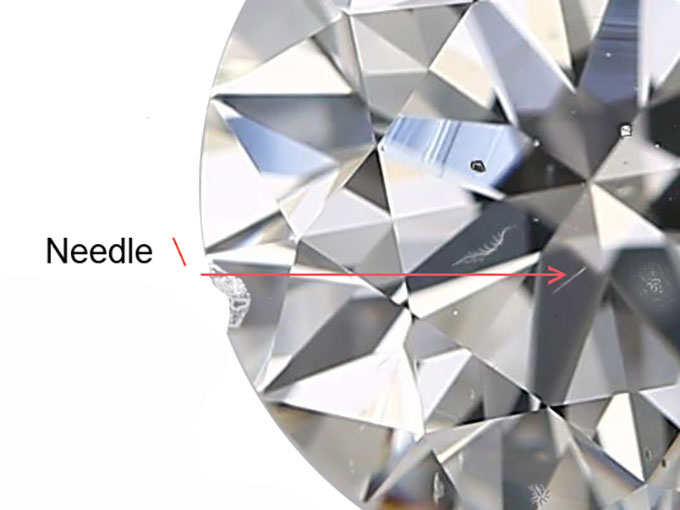
-
Pinpoints in Diamonds
“Pinpoints” are tiny spots inside a diamond, so small they often look like tiny dots under magnification. Individually, pinpoints usually aren’t a big issue and are common in many diamonds.
However, when a lot of pinpoints cluster together, they can create a hazy look, called a “cloud,” this is what we reviewed above👆
Imagine:
Looking at the night sky and seeing a few tiny stars scattered around. One or two stars don’t block your view, but if the sky is filled with them in one spot, it can look cloudy.
That’s similar to how clustered pinpoints affect a diamond, they can make it look cloudy and less brilliant.
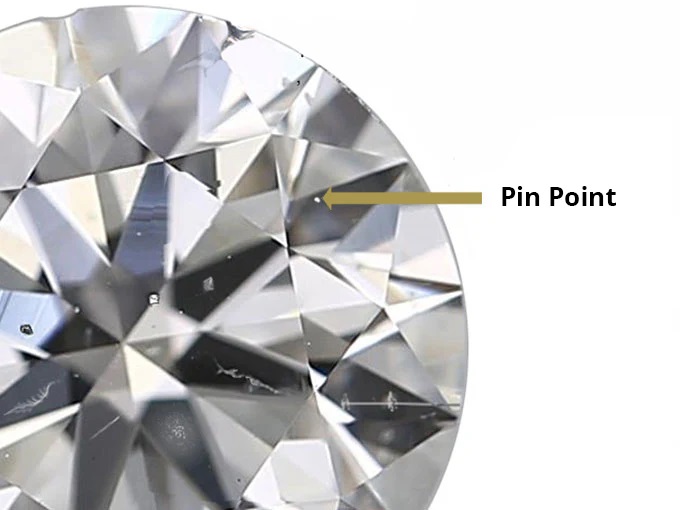
If a diamond has just one or two small pinpoints that are hard to see, they might not affect the overall look, but when pinpoints are grouped together or easily visible, it’s better to avoid those diamonds to ensure your stone shines as brightly as possible.
For instance:
Take a look at this beautiful Blue Nile diamond 👇
Despite its GIA rating of ‘VVS1,’ a brilliant clarity grade, it has only a few small “Pinpoint” inclusions, yet it remains valuable and highly desirable.
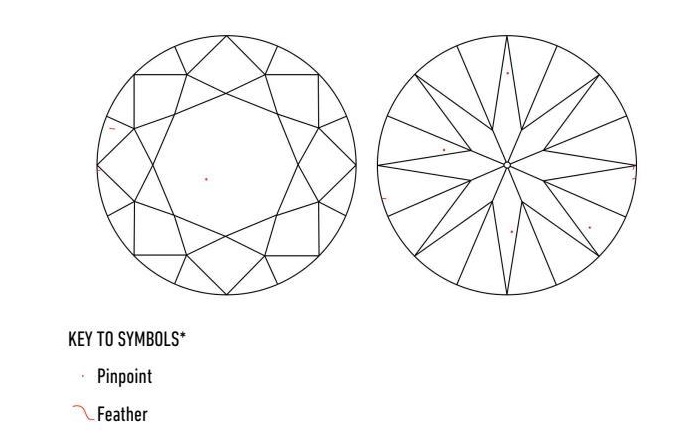
-
Twinning Wisps in Diamonds
“Twinning wisps” are a type of inclusion that forms when a diamond’s crystal structure gets twisted or bent while it’s forming deep in the earth.
These wisps can look like thin, wavy lines or swirls inside the diamond, and they often contain other inclusions like pinpoints or clouds.
Imagine:
A wavy ribbon trapped inside a clear block of glass. The ribbon makes the glass look a little less clear and can block the light from shining through properly.
In diamonds, twinning wisps do something similar, they can create a hazy look that affects the diamond’s clarity and sparkle.
Twinning wisps are more common in certain types of diamonds, especially lower-clarity ones.
If they’re small and hard to see, they might not make much of a difference, but if they’re large or in noticeable parts of the diamond, they can reduce the diamond’s overall brilliance.
It’s best to avoid diamonds with obvious twinning wisps if you want a stone that’s clear and shines brightly.
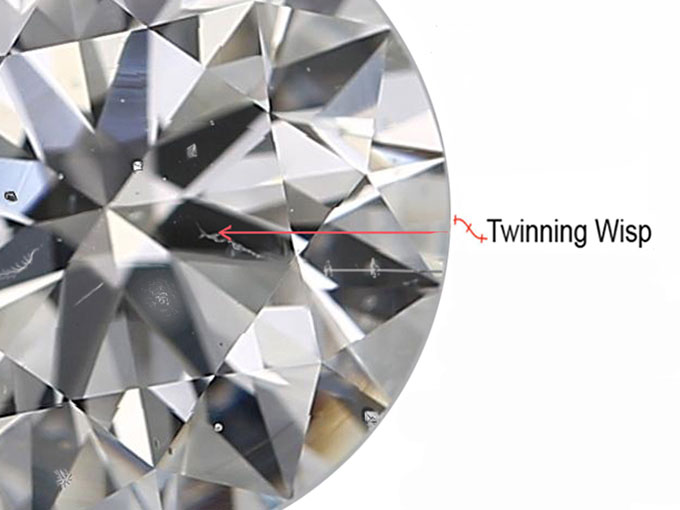
-
Internal Graining in Diamonds
“Internal graining” happens when the diamond’s crystal structure grows in uneven layers.
These grain lines can show up as faint streaks or curves inside the diamond, which can disrupt how light travels through it, affecting its sparkle.
Imagine a calm lake.
When the surface is smooth, it perfectly reflects the sky, but if there are ripples, the reflection becomes blurry.
Internal graining in diamonds works similarly, these tiny disruptions stop light from flowing smoothly, making the diamond less brilliant.
Picture a diamond as a clear pathway for light. Internal graining acts like small bumps in the road, scattering the light and making the diamond look less bright.
If the graining is barely noticeable, it won’t affect the diamond much. However, when it’s more obvious, it can dull the stone’s shine.
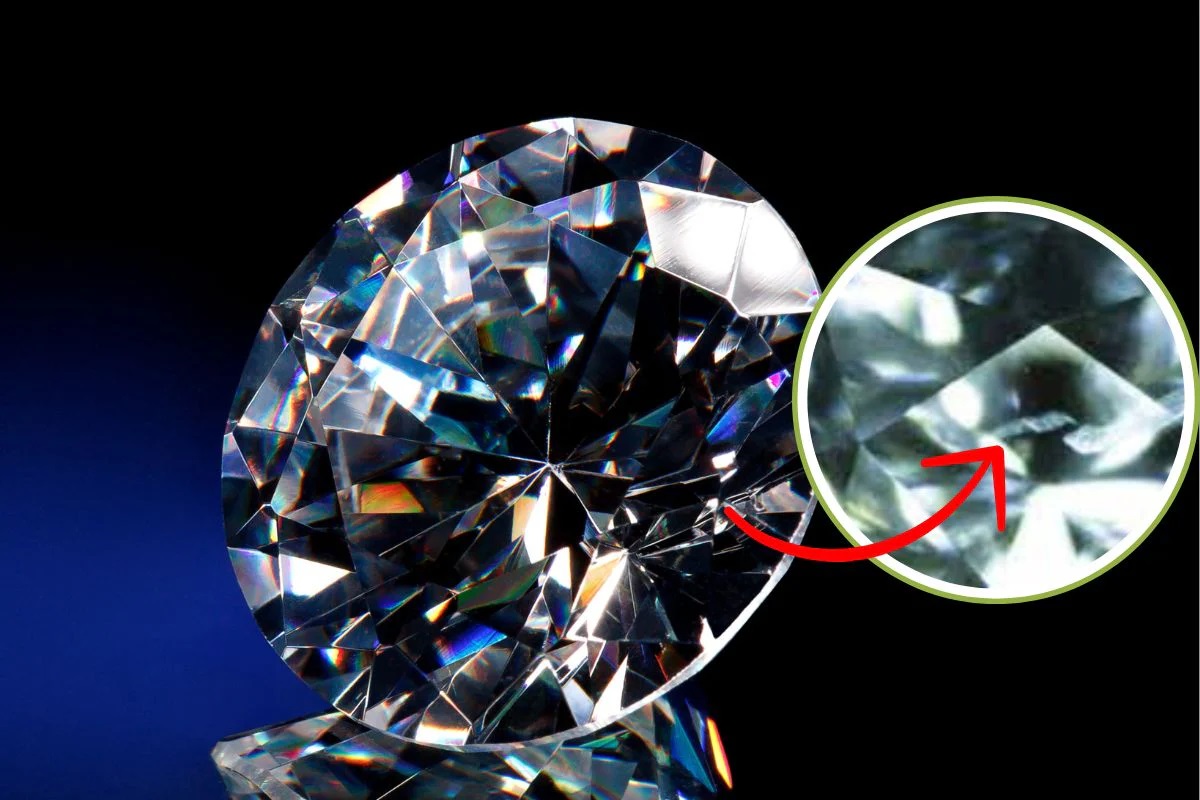
-
Knots in Diamonds
A “knot” in a diamond is an inclusion that happens when a crystal inside the diamond reaches the surface.
It looks like a small, raised bump on the outside of the diamond.
Knots can be tricky because they affect both how the diamond looks and how strong it is.
Picture a smooth pebble with a tiny bump sticking out, that bump isn’t part of the smooth surface and stands out, making it less perfect.
In a diamond, a knot works the same way, it breaks the smoothness and can even make the diamond weaker in that spot.
Knots can also cause problems when the diamond is being cut and polished because they make the surface uneven, and this can affect how light bounces off the diamond, making it look less shiny.
If you see a knot on a diamond, it’s usually best to avoid it, especially if the knot is noticeable or in a spot that could make the diamond more likely to chip or break.
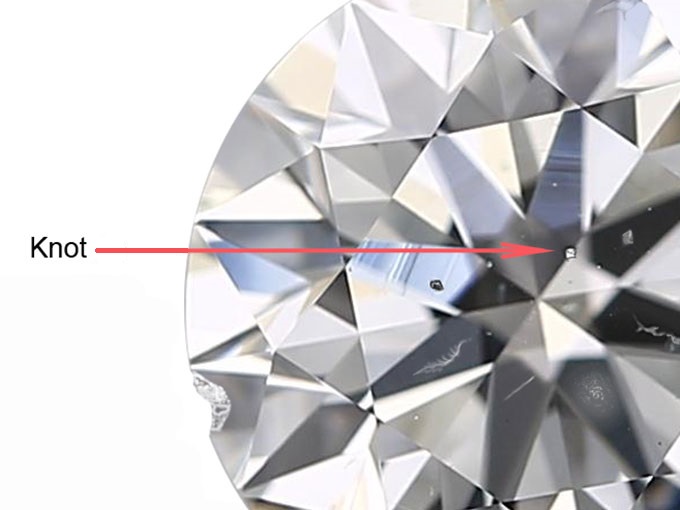
-
Bearding in Diamonds
“Bearding” happens when tiny, hair-like lines appear around the edge, or “girdle,” of a diamond, these fine lines are called “beards” because they look a bit like whiskers.
Bearding can happen when the diamond is being cut, especially if too much pressure is used.
Imagine holding a perfectly smooth ball. Now, picture tiny scratches or strands forming around the edge, these small marks can make the ball look less smooth and shiny.
In diamonds, bearding can have the same effect, it creates tiny lines that interrupt the smoothness, which can make the diamond look duller or less clear around the edges.
In some cases, a little bearding can be polished away, but if there’s too much, it might make the diamond look less brilliant overall.
To make sure your diamond keeps its sparkle, it’s best to avoid stones with a lot of noticeable bearding.
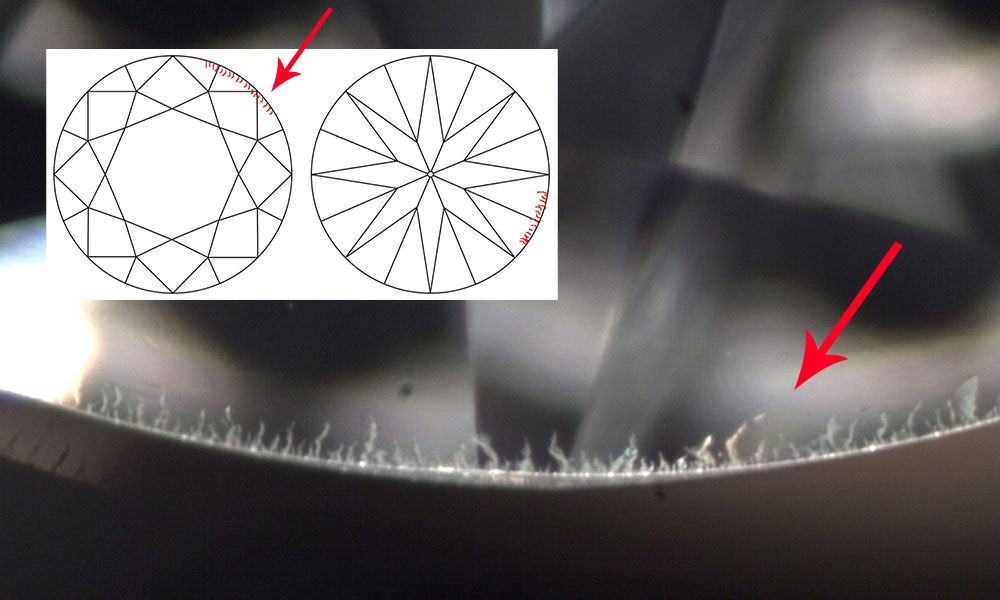
-
Graining Lines in Diamonds
Graining lines are like faint streaks or lines inside a diamond that happen because the crystal structure grew in an uneven way.
These lines can be hard to see, but when they’re noticeable, they can make the diamond look less clear and affect how the light shines through it.
Think of a clear, smooth surface, like a sheet of ice, if there are thin cracks or lines running through it, it doesn’t look as perfect anymore.
In a diamond, graining lines can make it look a bit cloudy or less brilliant because they interrupt the way light moves through the stone.
If the graining lines are light and not easy to see, they may not impact the diamond much.
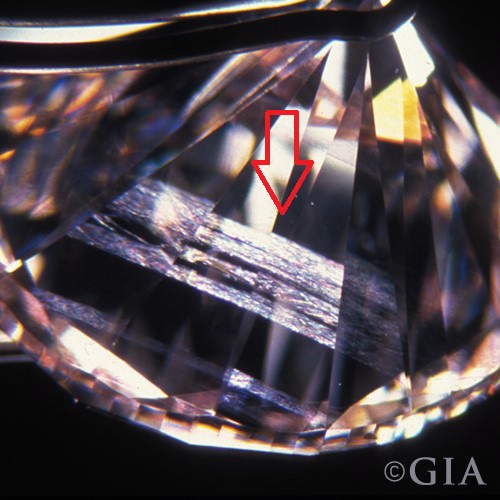
Image: WhiteFlash (courtesy of GIA)
-
Etch Channels in Diamonds
Etch channels are tiny, tube-like tunnels that form on or inside a diamond’s surface, these channels are created over time by natural chemical processes that happen as the diamond forms deep in the Earth.
While they might sound interesting, these channels can cause problems by affecting how smooth and shiny the diamond looks.
Imagine a smooth road, now, picture small grooves or dents running across it, the road isn’t as smooth anymore, and it makes the ride bumpier.
Etch channels work in a similar way, those little tunnels create uneven surfaces on the diamond, which can mess with how light reflects off the stone, making it look less brilliant.
Etch channels can vary in size, if they are small and in hidden areas, they might not have a big effect. However, larger or more noticeable etch channels can make the diamond look less clear or polished.
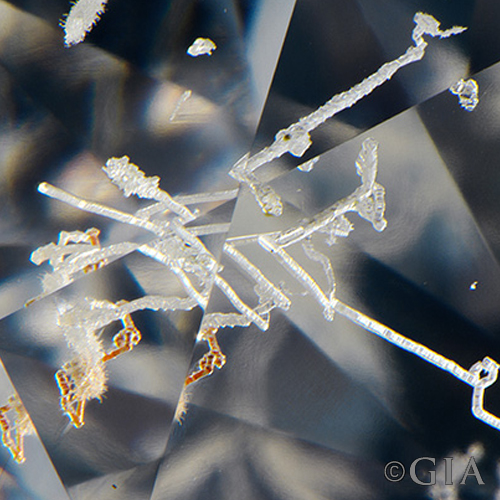
Image: WhiteFlash (courtesy of GIA)
-
Laser Drill Holes in Diamonds
Laser drill holes are tiny tunnels created by lasers to remove dark inclusions from inside a diamond.
Jewelers sometimes use this technique to improve the appearance of a diamond, but these small holes can leave behind visible marks or weaknesses in the stone.
Think of a piece of wood with a tiny hole drilled through it, even though the hole is small, it’s still noticeable and can make the wood weaker in that spot.
Similarly, laser drill holes leave little marks in the diamond that can make it more vulnerable to damage and affect its overall look.
These holes may not always be visible to the naked eye, but they can still lower the value of the diamond.
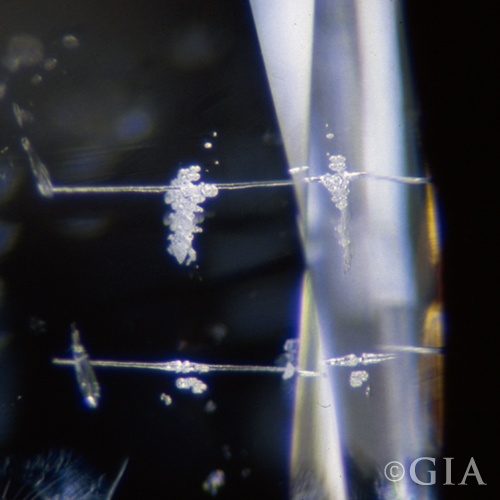
Image: WhiteFlash (courtesy of GIA)
-
Grain Centers in Diamonds
Grain centers are tiny points inside a diamond where the crystal structure is misaligned, creating small, concentrated spots of irregularity.
These spots can disrupt the way light moves through the diamond, which can make it look less clear and shiny.
Imagine you’re looking through a clear glass, but there’s a small smudge right in the middle, even though the rest of the glass is clean, that smudge draws attention and stops the light from passing through smoothly.
Similarly, grain centers create little areas inside the diamond that interrupt the flow of light, reducing its sparkle.
Grain centers are usually hard to see unless they’re large or in the middle of the diamond, but they can affect the overall appearance if they’re noticeable.
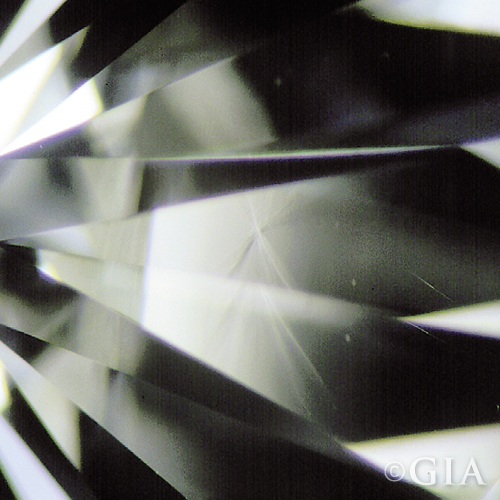
(Image Source: GIA)
You may be interested in:
3 Cheat Sheets to Buy Diamond Jewelry Like a Pro
-
Indented Naturals in Diamonds
Indented naturals are like little dents left behind after the diamond is cut and polished, these unpolished spots don’t align with the rest of the smooth surface, making the diamond look uneven in certain areas.
Instead of reflecting light perfectly, these tiny indentations can create distractions on the diamond’s surface.
When they’re small, they may blend into the diamond, but when they’re larger or near key areas, they can affect the stone’s overall strength and appearance.
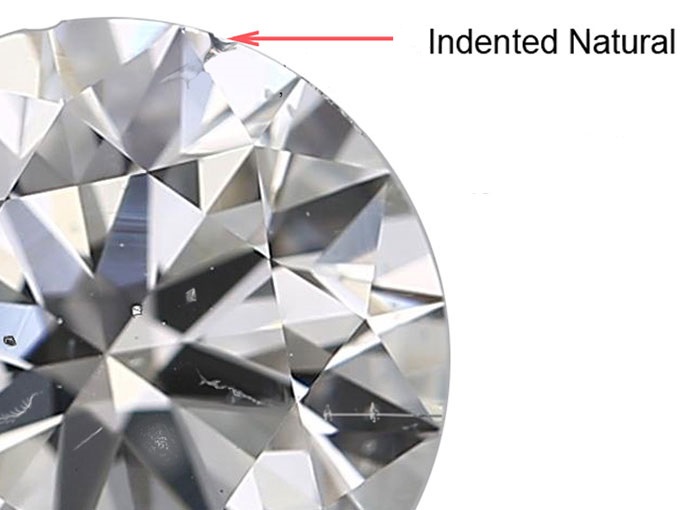
Visible Inclusions: What to Watch For
-
What Are Visible Inclusions, and Why Are They Important?
Visible inclusions are tiny flaws or marks inside a diamond that you can see with your eyes, without a magnifying glass, these flaws can look like small spots, lines, or cloudy areas within the diamond.
They are important because they affect how clear and sparkly the diamond looks, the more visible the inclusions, the less light the diamond reflects, making it appear less brilliant.
Imagine looking through a window with smudges on it, even if the window is clean in most places, those little smudges make it harder to see through. Inclusions in a diamond work the same way, they can get in the way of the light and take away from the diamond’s beauty.
-
Tips for Identifying Eye-Clean Diamonds and Avoiding Visible Flaws
An “eye-clean” diamond is one where the inclusions are so small or hidden that you can’t see them without using a magnifying tool.
Here are some simple tips to help you find eye-clean diamonds and avoid visible inclusions:
-
Check the Clarity Grade
Diamonds with a clarity grade of VS2 or higher are often eye-clean, meaning the inclusions are usually too small to see without magnification. However, it’s always good to double-check by looking closely at the diamond yourself.
-
Look at the Center
Inclusions near the center of the diamond are more noticeable than those near the edges. Try to find diamonds where any flaws are off to the side, so they’re harder to spot.
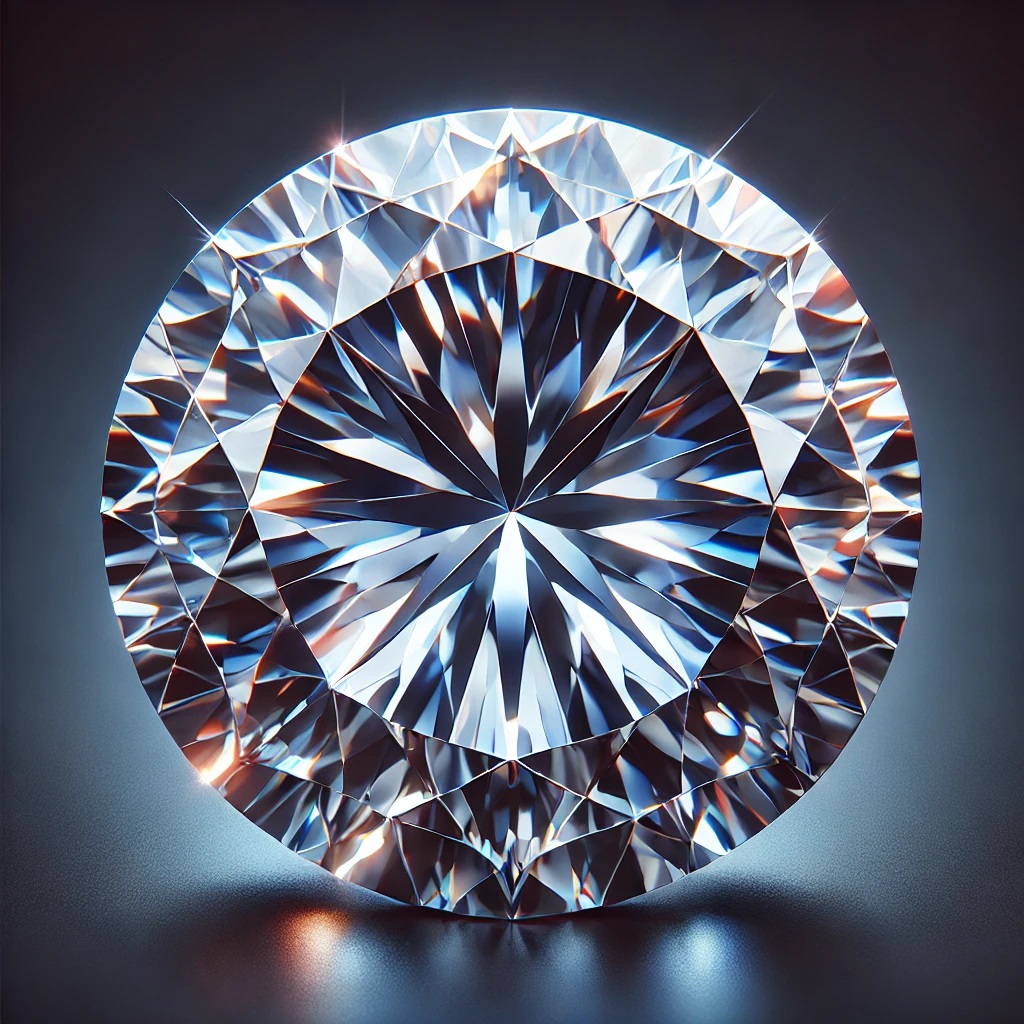
-
Ask for a Video or High-Quality Image
If you’re buying a diamond online, ask for a video or clear image of the actual diamond. This way, you can see if any inclusions are visible before making a decision.
reputable stores like Blue Nile and James Allen offer helpful features like “Super Zoom” and 360-degree viewing, these tools allow you to see the diamond up close and from every angle, helping you spot any visible Inclusions before you buy.
-
Consider the Diamond Shape
Some diamond shapes, like round cuts, tend to hide inclusions better because of how the light reflects. Other shapes, like emerald cuts, have large, open surfaces that can make flaws easier to spot.
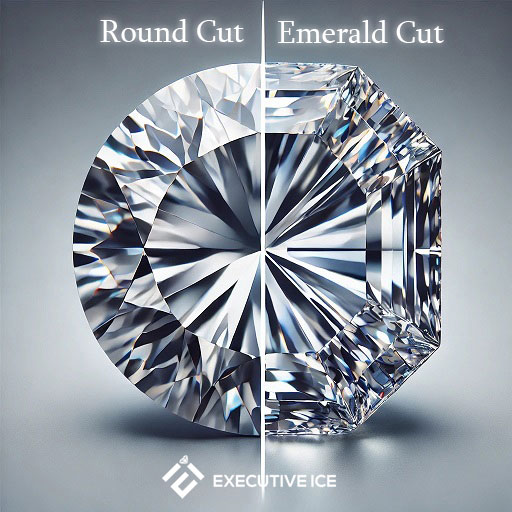
How to Spot Diamond Clarity Characteristics to Avoid
Practical Advice for Inspecting Diamonds and Recognizing Problematic Inclusions
When you’re looking at a diamond, it’s important to know what to watch out for so you don’t end up with one that has visible flaws or weak spots.
Here are some simple tips for inspecting diamonds and spotting problematic inclusions:
-
Use a Magnifying Tool
A jeweler’s loupe (a small magnifying glass) or a microscope is a helpful tool to examine a diamond closely, it lets you see any tiny marks or flaws inside the diamond that you wouldn’t notice with just your eyes.
If you don’t have one, most jewelers will have these tools and can show you how to use them.
-
Check Under Good Lighting
Make sure the diamond is examined under bright lighting, which helps reveal inclusions, if the lighting is dim, it can hide small flaws that might affect the diamond’s sparkle.
-
Again, focus on the Center of the Diamond
Inclusions near the middle of the diamond (the table) are easier to see than those near the edges.
Look closely at the center, where light reflects the most, this is where inclusions like feathers, crystals, or clouds are more noticeable.
-
Look for Patterns
Sometimes inclusions are clustered together in groups.
For example:
A cloud of tiny inclusions can make the diamond look hazy, even if each one is small, keep an eye out for these patterns because they can affect how much the diamond sparkles.
-
Ask for Professional Clarity Grading
Always ask for a report from a trusted grading lab, like GIA or AGS, they provide a detailed analysis of a diamond’s clarity, so you’ll know exactly where and what kinds of inclusions are present.
Here’s an example of what a GIA certificate looks like👇
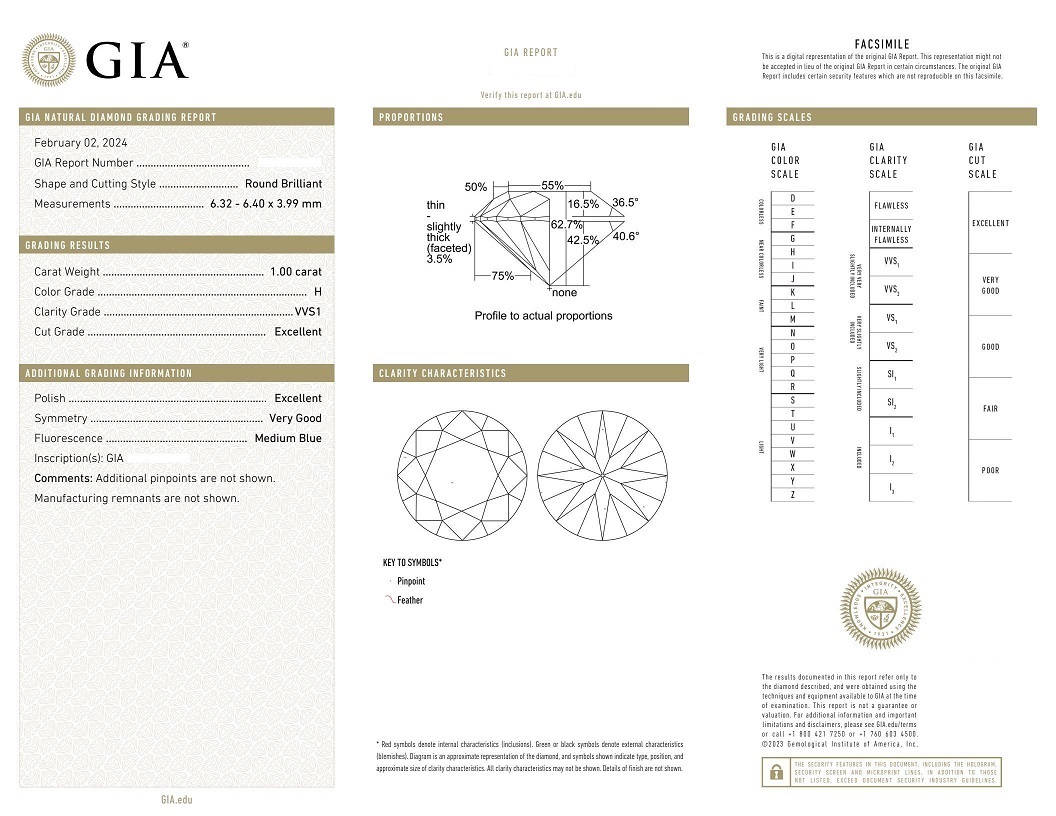
The certificate will show where the inclusions are located, what type they are, and how big they are, this makes it easy to spot any potential problems.
Plus:
These certificates are often available online for diamonds sold by big retailers like James Allen and Blue Nile. You can simply click on the “GIA icon” or “View Report” to see all the details before you make your decision.
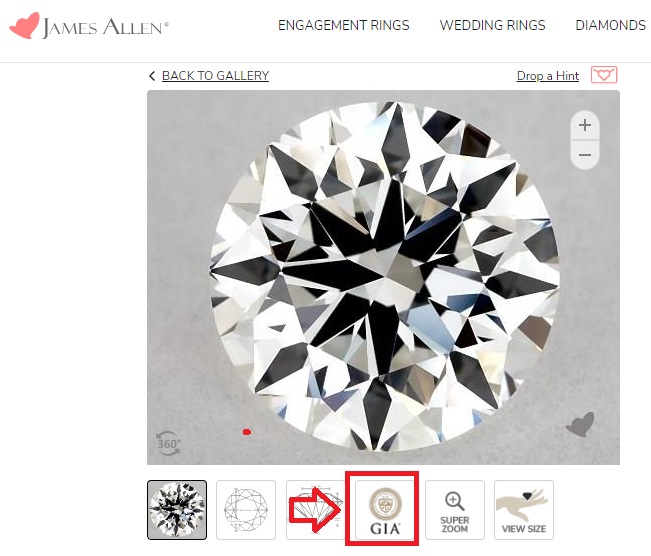
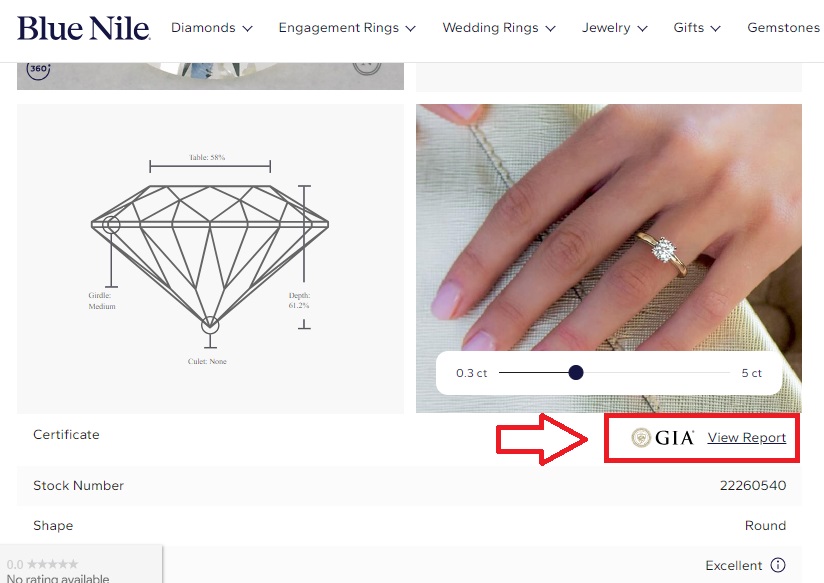
Having a certificate gives you peace of mind, knowing the diamond has been carefully checked and graded by professionals. This way, you can feel confident that the diamond you choose will be both beautiful and valuable.
Conclusion
Choosing a diamond doesn’t have to be complicated, knowing what to watch for when it comes to clarity helps ensure you get a beautiful and long-lasting stone.
While some inclusions are acceptable, others can affect a diamond’s sparkle or strength, so it’s important to recognize the ones that should be avoided.
Take your time to carefully inspect the diamond, whether using a magnifying glass or by checking its clarity report from a trusted source, these small steps will guide you toward making a decision that feels right.
In the end, finding a diamond that shines brightly and fits your expectations will make all the difference.
Enjoy the process and trust your instincts as you search for the perfect diamond!


